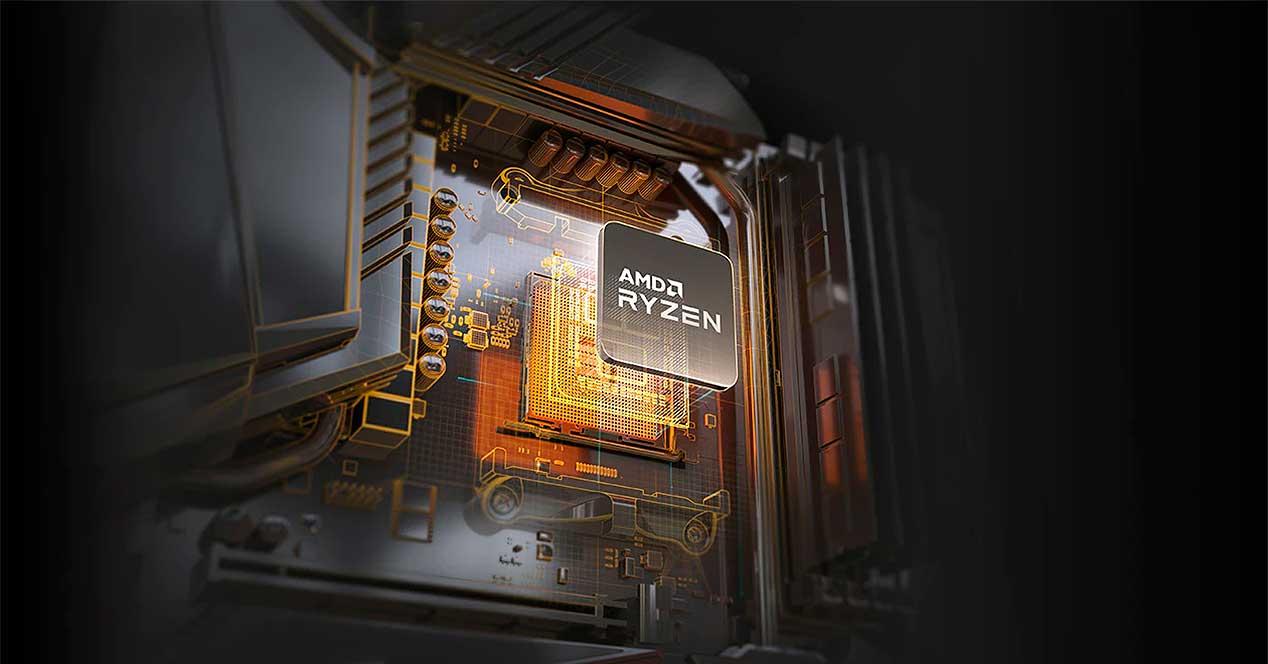Therefore, and if we talk about the range of desktop computers for sale, we can say that it is the smallest of the family and, as such, its specifications are much lower than those of its older brothers .
We start with the USBs, because this A320 chipset can contain up to 13 ports of this type at different speeds and there’s a bit of controversy here, as each manufacturer can switch between different versions with one caveat: only one can be USB 3.2 Gen 2.
In other words, each manufacturer can decide how many USB 2.0 or USB 3.0 or 3.1 in the number you choose as long as they do not exceed 12 in total, balancing those in the rear and interior. As for the SATA ports, AMD also leaves the freedom of choice to the manufacturers, even if here everyone opts for the same type of bus. SATA-3
The number of ports we can have is 6, where not all manufacturers include them. That said, we come to a key section such as the PCIe lanes, and that is that the A320 chipset will only be able to accommodate 32 PCIe lanes
Therefore, of these 24 (the others are reserved for other internal CPU, SSD and RAM needs), we will have 16 available for the GPU and 4 for the SSDs under NVMe. The remaining 4 are reserved for network cards and high-speed USB such as the aforementioned Gen 2.
In any case, all the lines will be PCIe 3.0, not being able to make the jump to PCIe 4.0 due to a simple hardware lock by AMD, which reduces costs to offer cheaper cards. Finally, there is no overclocking option.
As for CPU support, after AMD’s criteria changes, the A320 chipset now supports all Ryzen CPUs, although there are many nuances to this. And it is that said support is relegated to the wishes of each manufacturer with their motherboard models, so to make sure that the CPU is supported we will have to go manually to look for the list of CPUs of the motherboard model that we let’s take a look, no, unfortunately there is another way, because the BIOS constantly changes the lists.
A520, the improved low-end
With the A520 chipset we have a performance leap that keeps us in AMD’s lower tier. With this chipset, the total number of USBs a motherboard can have as a whole remains at 13, but the mentioned jump is based on the possibility that 5 of them are USB 3.2 Gen 2which is interesting for high-speed devices.
The remaining 8 will be distributed among the different speeds and port types as usual. As for the number of SATA ports, there is no change in type, a maximum of six whereas as a rule it will be type 3. Given this, are there no more changes ?
Well yes, since the number of PCIe lanes becomes 34 in total of which 26 they are usable. What is good news is overshadowed by the fact that AMD follows the same policy of restrictions in its determination to leave only PCIe 3.0 and not 4.0 for all.
Graphics can therefore only use 16 lines under this type of bus and NVMe SSDs are also relegated to this version with 4 lines exclusively. Same problem for overclocking because it is available neither in memory nor in CPU.
Regarding the latter (the CPU), it should be added that the A520 chipset supports processors Zen 2 (Matisse and Renoir) and for Zen 3 (Vermeer), but loses it for Zen and Zen+ processors, which means omitting Summit Ridge, Raven Ridge, Pinnacle Ridge and Picasso architectures.
AMD A520 vs A320, which chipset to choose?
There is no doubt that the A520 chipset is slightly superior, but not by much and perhaps not because of something relevant like USB 3.2 Gen 2. The prices of motherboards that incorporate one and the other are really adjusted in the most basic models that They range from 45 dollars
There aren’t any noticeable differences to distinguish either, relying on the fact that we’re referring to the cheapest and most expensive plate designs for this A320 vs A520 comparison, so it’s all going to reside in something as simple as personal choice depending on the number of USB keys that integrate each model of motherboard.
But if we look closely and have unusual storage needs for the average user, we will also have to consider the number of SATA ports.
The reason is simple and it is nothing more than a reduction in costs, since as they say the average user does not need more than four and therefore the inclusion in the vast majority of models of this number of ports and not six as allowed by AMD.
In fact, we haven’t been able to find a specific model with those 6 SATA 3 ports, so manufacturers are trying to compete by cutting costs to try and introduce them in other key areas.
Although it seems obvious, it should be mentioned that neither chipset supports SLI or CrossFireX and of course they include compatibility with RAID 0.1 and 10 respectively. So if we need more features than all mentioned between one and the other, what we need is to upgrade to another superior chipset.
The comparison between A520 vs A320 is in favor of the first, in addition to being newer and supporting the most current processors, the characteristics are slightly better, as well as its price in general and depending on the model.












